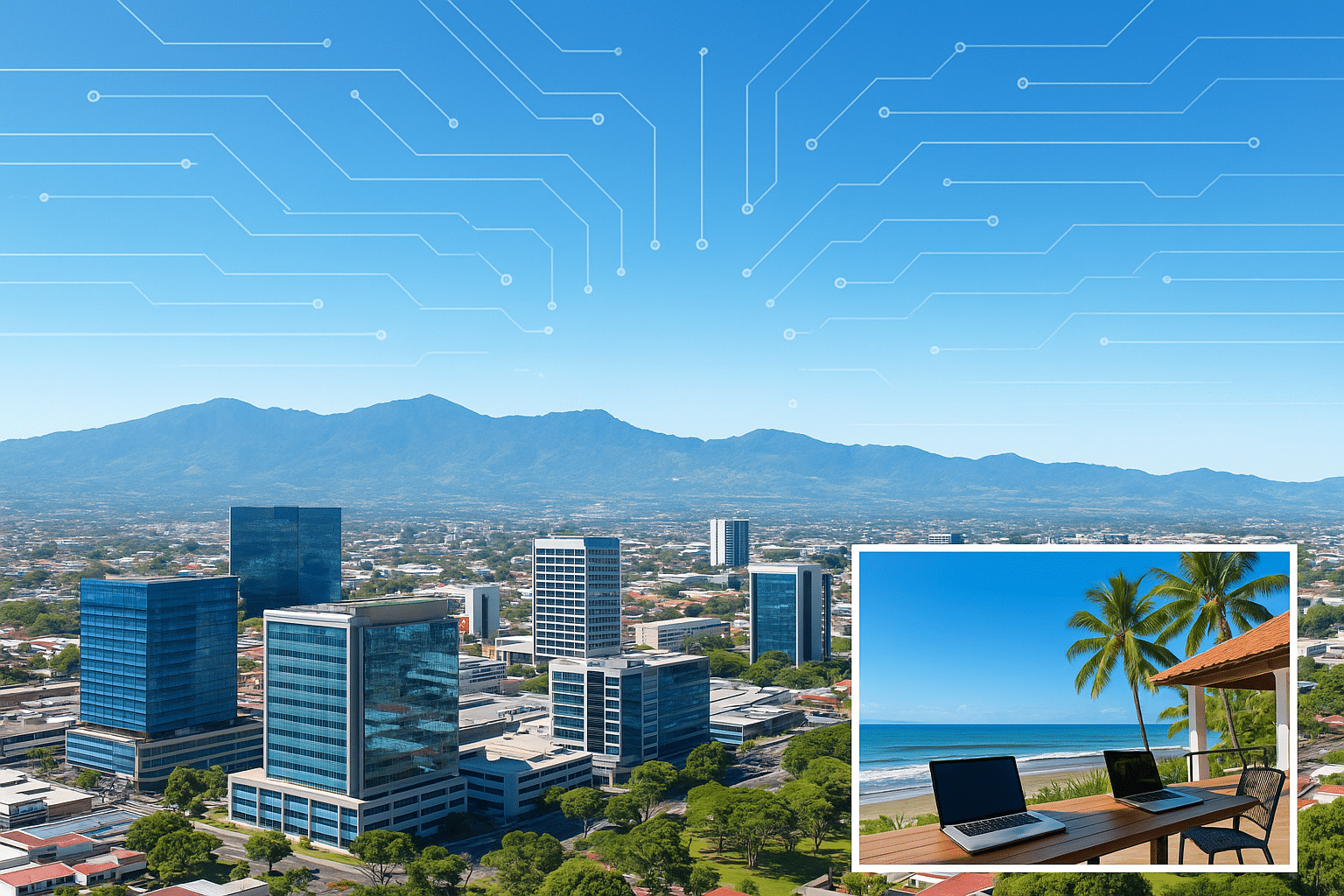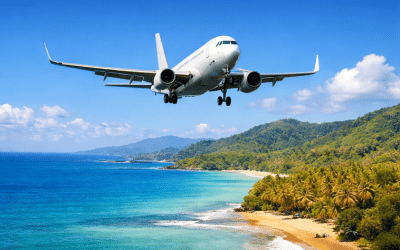Costa Rica wraps business ambition with pure-life energy. In a single week, you can pitch a venture fund in San José, mountain-bike cloud forest trails, catch a marimba night in the city, spot scarlet macaws on a jungle river, tour a coworking villa while scouting real estate, meet med-tech suppliers for your next product run, and finish with ceviche, gallo pinto and artisan coffee. That blend of Adventures, Culture, Entertainment, wildlife, Real Estate, Business and Food is exactly why founders and global brands are planting flags here.

Why is Costa Rica becoming the region’s “Silicon Valley”?
Because Costa Rica combines tech-ready talent, stable institutions and investment incentives in one compact market. The country consistently attracts high-value manufacturing, med-tech, shared services, and software engineering thanks to strong universities, English proficiency and pro-innovation policy.
How does location and connectivity give companies an edge?
Proximity to the U.S. and direct links to Europe shorten supply chains and response times. Firms operate in a time zone that overlaps with both coasts of the U.S., while air and sea logistics move components, prototypes and teams quickly.
What does that mean in practice?
- Near-shore support: Customer success and engineering squads can collaborate in real time with U.S. and EU counterparts.
- Faster iterations: Shipping prototypes and parts takes days, not weeks, accelerating product-market fit.
- Market reach: Free-trade agreements and trusted customs processes ease multi-country expansion across the Americas.
What makes the talent pool stand out?
A bilingual, STEM-skilled workforce with a service mindset. Public universities and technical institutes feed a pipeline of engineers, data analysts and life-sciences technicians, while private academies sharpen skills in cloud, cybersecurity, AI and UX.
Talent advantages
- English first: High English proficiency reduces friction in global teams.
- STEM depth: Electronics, biotech and software skills support both R&D and scaled operations.
- Team culture: Collaborative, customer-centric attitudes fit modern product organisations.
Which incentives and stability reduce risk?
Free Trade Zone (FTZ) regimes offer tax benefits tied to employment and export commitments, and an independent judiciary supports long-term planning. Political stability, renewable-heavy electricity and a strong environmental brand add resilience and reputational lift.
Investor-friendly features
- Tax incentives: FTZ benefits for qualified activities (manufacturing, services, logistics).
- Legal predictability: Clear rules and a pro-investment stance.
- Green power: High renewable share aligns with ESG targets and brand values.
Where are the tech clusters—and what are their strengths?
Most activity spans the Greater Metropolitan Area (San José, Heredia, Alajuela), with growing nodes along the Pacific.
Hotspots to watch
- San José / Heredia: Software, shared services, cybersecurity, AI, fintech.
- Alajuela: Advanced manufacturing, med-tech, logistics near the international airport.
- Guanacaste & coastal hubs: Remote-work communities, digital nomad studios, tourism-tech pilots and wellness-focused founder retreats.
Which sectors are booming right now?
Diversified high-value work rather than a single play.
- Med-tech & life sciences: Cleanroom manufacturing, device assembly, quality and regulatory talent.
- Semiconductors & electronics: Precision components, testing, and smart-device sub-assemblies.
- Cloud & AI services: Data engineering, ML ops, CX automation, and platform support.
- Cybersecurity & fintech: Compliance-ready teams for regulated markets.
- Agri-tech & climate tech: Sensor networks, traceability, and nature-positive solutions aligned with Costa Rica’s conservation ethos.
Does quality of life really help retention?
Yes—Pura Vida is a talent magnet. Safe cities, excellent private healthcare options, national parks at your doorstep and a culture that values balance make it easier to attract and keep senior engineers and product leaders.
Lifestyle edges
- Outdoor reset: Surf before stand-up; volcano trek after sprint review.
- Family-friendly: International schools and community vibe.
- Creative fuel: Galleries, live music, coffee culture and cuisine from sodas to chef-led kitchens.
What should founders and investors watch out for?
There are practicalities to plan for—and they’re manageable with local partners.
Heads-up items (and fixes)
- Permitting & timelines: Build lead time into facility or FTZ onboarding; use experienced legal/ops firms.
- Talent competition: Proactively craft career ladders, learning budgets and RSU plans.
- Power & connectivity needs: Specify redundancy (dual ISPs, backup power) for mission-critical sites.
- Cost clarity: Model total rewards (benefits, transport, meals) to remain competitive beyond base salaries.
- Community integration: Support local suppliers and training programmes to deepen goodwill and pipelines.
How do you start—pilot or go big?
Begin with a service or R&D pod and scale into FTZ manufacturing or regional HQ once KPIs hit. Many companies test with 20–50 roles, then expand to 200+ as they localise more of the value chain.
Practical first steps
- Scope a 90-day pilot: Define a clear charter (e.g., data platform squad or device QA cell).
- Pick the right site: Balance commute, talent catchment, FTZ status and resilience.
- Hire for culture: Blend experienced leads with fast learners; emphasise English, documentation and ownership.
- Measure relentlessly: Time-to-resolve, defect leakage, sprint velocity, first-pass yield—then scale what works.
FAQ
Is Costa Rica better for services or manufacturing? It suits both—shared services and software thrive near San José, while med-tech and electronics manufacturing cluster near airport logistics with FTZ benefits.
Do I need Spanish to operate? Senior teams often work in English, but Spanish unlocks faster local execution and leadership depth.
What’s the typical ramp time? A lean services pod can be live in 60–120 days; regulated manufacturing requires more planning and validation.
How expensive is it versus other near-shore hubs? Salaries may run higher than some peers, but productivity, retention and risk-adjusted benefits often offset headline costs.
Is remote-first feasible? Yes—many firms blend hybrid HQs in the valley with remote coastal contributors and strong async norms.
Costa Rica pairs world-class capability with a lifestyle that keeps great teams energised. If you’re weighing your next hub in the Americas, this is a rare market where product speed, brand equity and team wellbeing can all move in the right direction at once.






